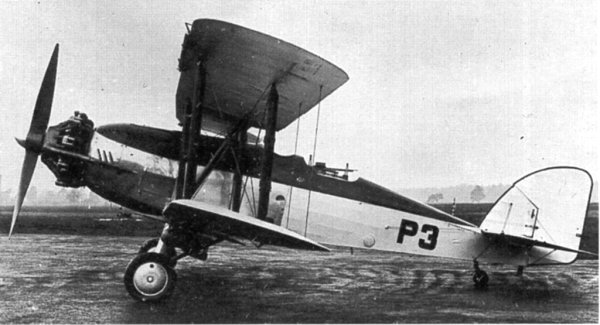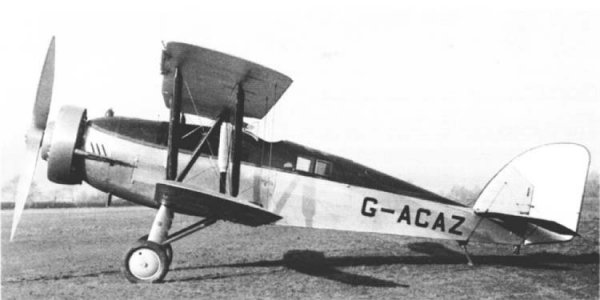Westland PV-3
Westland PV-3 (Houston-Westland)
A prototype torpedo bomber that flew over Mount Everest
The Westland PV-3 was a British two-seat torpedo bomber of the 1930s built by Westland Aircraft Works. The aircraft was a private venture development and based on the Westland Wapiti. It never entered production. The aircraft is best known as one of the first two to fly over Everest as part of the Houston-Mount Everest Flight Expedition.
The PV-3 design was produced in 1930 as a private venture two-seat aircraft that could be used as either a carrier-based torpedo bomber intended to carry a new lightweight torpedo being developed by the Admiralty, or as an army-co-operation aircraft. As such, it was a development of the Wapiti, with an all-metal structure and folding two-bay wings. It was powered by a 575 hp (429 kW) Bristol Jupiter XFA radial engine, having a defensive armament of one forward-firing Vickers machine gun and a Lewis gun on a Scarff ring on the observer's cockpit. It could carry either the planned 1,000 lb (455 kg) torpedo under the fuselage or an equivalent weight of bombs under the wings.
It first flew in February 1931, showing good performance (in particular, a high ceiling) and handling when tested by the Aeroplane and Armament Experimental Establishment at Martlesham Heath. Despite this, no orders resulted, and the lightweight torpedo was cancelled.
In November 1932, the PV-3 was chosen, together with the Westland PV-6 (the prototype of the Westland Wallace) for the Houston Mount Everest Flying Expedition to fly over and photograph Mount Everest. The aircraft, now registered G-ACAZ, was remodelled with a rear cabin and a 630 hp Bristol Pegasus engine driving a large diameter propeller. It was test flown from Yeovil in the new configuration, and on 25 January 1933 reached a height of 35,000 ft.
Flown by Lord Clydesdale with Stewart Blacker as observer and photographer, it was accompanied by the Wallace as, on 3 April 1933, the two aircraft became the first to fly over Mount Everest, flying over Kanchenjunga on 4 April and making a second flight over Everest (as the initial flight had produced inadequate photographs for map-making) on 19 April 1933. The PV-3 was later exhibited at Selfridges department store in London in July 1933. In December 1933 the aircraft, given the military serial K4048, was issued to Bristol Aircraft as an engine test bed.
The aircraft is also referred to as the Houston-Westland in honour of Lady Houston who had financed the 1933 expedition.
![]()
| General characteristics | |
| Crew: | Two |
| Length: | 34 ft 2 in (10.42 m) |
| Wingspan: | 46 ft 6 in (14.18 m) |
| Height: | 11 ft 8 in (3.56 m) |
| Wing area: | 500 ft² (46.5 m²) |
| Empty weight: | 3,420 lb (1,555 kg) |
| Loaded weight: | 5,100 lb (2,318 kg) |
| Powerplant: | 1 × Bristol Pegasus IS3 nine-cylinder radial engine, 630 hp (470 kW) |
| Performance | |
| Maximum speed: | 163 mph (142 knots, 262 km/h) |
| Service ceiling: | 35,000 ft (15,900 m) |
| Climb to 20,000 ft (6,100 m): | 20 min |
| Production | |
| Number built: | 1 |
| First flight: | February 1931 |
All the above text based on / 'borrowed' from Wikipedia.
gallery

The Westland PV-3 in its pre-Everest condition, before modifications.

The same machine after its modifications for the Everest Expedition and registration as G-ACAZ. It is frequently referred to as the Houston-Westland in honour of Lady Houston who had financed the 1933 expedition.